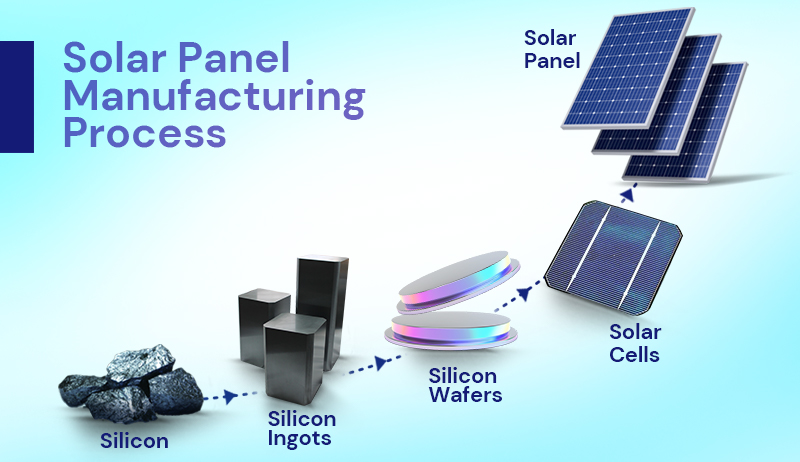The post Solar Panel Manufacturing Process In Australia appeared first on Cyanergy.
https://cyanergy.com.au/blog/solar-panel-manufacturing-process-in-australia/
Renewable Energy
Trump Welcomes Qatar to Build Air Force Base in Idaho
 No one seems to understand Trump’s motivation here. Did it have anything to do with the $400 million gift aircraft?
No one seems to understand Trump’s motivation here. Did it have anything to do with the $400 million gift aircraft?
Does Qatar fear attack from Alberta or Saskatoon?
The Qataris say they need to be prepared to help achieve peace between the Israelis and the Palestinians. I’m suspicious, though I’m no expert in military logistics. We’re talking about a 6000-mile plane ride.
Renewable Energy
Trump’s Avalanche of Lies
 What? I’m confused. “Trump’s Statement” of a few months was that “Gas prices are (present tense) under $2.”
What? I’m confused. “Trump’s Statement” of a few months was that “Gas prices are (present tense) under $2.”
It would have been interesting if one of the gaggle of reporters surrounding him could have asked the obvious question: “That’s great, sir, but can you name a single state in the union whose gas prices are under $2?
It would have been a tense moment, for sure, but don’t we have any self-respect?
Renewable Energy
Where Does Domestic Violence Come From?
 Over the past few months, and especially since the murder of Charlie Kirk, the right-wing news sources are telling us that most of the politically related violence is coming from the left, in particular from the left-wing “terrorist associations,” e.g., Antifa.
Over the past few months, and especially since the murder of Charlie Kirk, the right-wing news sources are telling us that most of the politically related violence is coming from the left, in particular from the left-wing “terrorist associations,” e.g., Antifa.
If you look at some coverage on the subject, however, you’ll learn that this is simple false. Here’s a bit from a PBS piece:
PBS: Policymakers and the public need reliable evidence and actual data to understand the reality of politically motivated violence.
Craig: No, they don’t. Are you serious? Are we to believe that Donald Trump is sending federal troops to democratically-led cities based on “reliable evidence and actual data?” This is a sick joke.
PBS: From our research on extremism, it’s clear that the president’s and Miller’s assertions about political violence from the left are not based on actual facts.
Here’s more from the PBS article:
After the Sept. 10, 2025, assassination of conservative political activist Charlie Kirk, President Donald Trump claimed that radical leftist groups foment political violence in the U.S., and “they should be put in jail.”
“The radical left causes tremendous violence,” he said, asserting that “they seem to do it in a bigger way” than groups on the right.
WATCH: Extremism scholar analyzes influence of rhetoric on political violence
Top presidential adviser Stephen Miller also weighed in after Kirk’s killing, saying that left-wing political organizations constitute “a vast domestic terror movement.”
“We are going to use every resource we have … throughout this government to identify, disrupt, dismantle and destroy these networks and make America safe again,” Miller said.
Political violence rising
The understanding of political violence is complicated by differences in definitions and the recent Department of Justice removal of an important government-sponsored study of domestic terrorists.
Political violence in the U.S. has risen in recent months and takes forms that go unrecognized. During the 2024 election cycle, nearly half of all states reported threats against election workers, including social media death threats, intimidation and doxing.
WATCH: Trump conspiracies inspire threats against judges, jurors and election workers
Kirk’s assassination illustrates the growing threat. The man charged with the murder, Tyler Robinson, allegedly planned the attack in writing and online.
This follows other politically motivated killings, including the June assassination of Democratic Minnesota state Rep. and former House Speaker Melissa Hortman and her husband.
These incidents reflect a normalization of political violence. Threats and violence are increasingly treated as acceptable for achieving political goals, posing serious risks to democracy and society.
-
Climate Change2 years ago
Spanish-language misinformation on renewable energy spreads online, report shows
-
Climate Change2 months ago
Guest post: Why China is still building new coal – and when it might stop
-
Climate Change Videos2 years ago
The toxic gas flares fuelling Nigeria’s climate change – BBC News
-

 Greenhouse Gases1 year ago
Greenhouse Gases1 year ago嘉宾来稿:满足中国增长的用电需求 光伏加储能“比新建煤电更实惠”
-
Greenhouse Gases2 months ago
Guest post: Why China is still building new coal – and when it might stop
-

 Climate Change1 year ago
Climate Change1 year ago嘉宾来稿:满足中国增长的用电需求 光伏加储能“比新建煤电更实惠”
-

 Carbon Footprint2 years ago
Carbon Footprint2 years agoUS SEC’s Climate Disclosure Rules Spur Renewed Interest in Carbon Credits
-
Renewable Energy3 months ago
US Grid Strain, Possible Allete Sale







